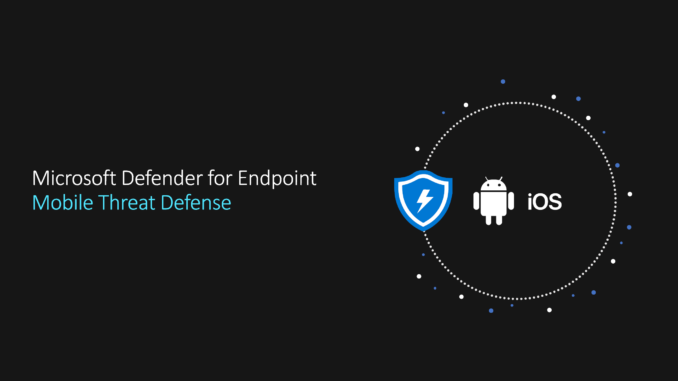
- #MICROSOFT INTUNE WINDOWS DEFENDER WINDOWS 10#
- #MICROSOFT INTUNE WINDOWS DEFENDER CRACK#
- #MICROSOFT INTUNE WINDOWS DEFENDER WINDOWS#
Click (1) “ + Select groups to include“.Assign the script to a group of users (Not devices as that’s not what the script was designed for):.You want the script to execute in system context, and specifically NOT the users context, as the user does not hold enough permissions for the script to complete. Choose the file you previously saved as (1-3) “ Update-TeamsFWRules.ps1“.And stick to just adding the script through the “Select location” option.
#MICROSOFT INTUNE WINDOWS DEFENDER WINDOWS#
Description: “Gets rid of help desk calls regarding the Microsoft Teams Windows firewall prompt”.Fill out the basic information with something self explanatory like:.Jump straight to the (1) Devices > (2) Windows > (3) PowerShell scripts blade.Head on over to the Microsoft Intune admin center at t. I hope you grabbed the PowerShell script already from GitHub (and have it handy), with the script saved as “ Update-TeamsFWRules.ps1“. Configuring a PowerShell script deployment with Intune Thus only creating the necessary rules for the signed in user.Īs an added bonus – the script also does a cleanup of any existing rules the user might have gotten by dismissing previous Firewall prompts. Which means that it will only run once per user, and it will also be able to tell who is actually signed in to the device. Well this new script has been designed to be deployed as an Intune PowerShell script assigned to a group of users. So how is this more intelligent you might ask? I have taken the liberty of writing you a new script specifically designed for Intune!įetch it from my Github repository: Update-TeamsFWRules.ps1 And in most cases it will! But it’s not really that intelligent…

(Microsoft Teams Firewall problem solved?) You can see that it’s a fairly simple solution.įind all the user profiles currently on the system – check they have Teams installed – add Firewall rule for the found user profile. Taking a glance at the official documentation (and solution) from Microsoft over at:
#MICROSOFT INTUNE WINDOWS DEFENDER CRACK#
Now on the other hand, if you have deployed the Teams machine-wide installer, you are able to just create a single Firewall rule with Intune’s built-in Firewall CSP.īut that’s no fun, so let’s take a look at how you can crack this “per-user” nut with PowerShell and Microsoft Intune! The script to fix the Microsoft Teams firewall madness
#MICROSOFT INTUNE WINDOWS DEFENDER WINDOWS 10#
Things get complicated because the Teams.exe file is usually installed per-user in the users own APPDATA folder ( %localappdata%\Microsoft\Teams\current\Teams.exe), so we need to create a Firewall rule for each user on the Windows 10 Device – not doable with the built-in Firewall CSP. So it was able to create firewall rules anyway?! (This is the madness of the Microsoft Teams firewall prompt). Dismissing the prompt will actually leave you with two blocking Firewall rules for Teams.exe, which will force the Teams client to connect via other means. Which most users don’t have, so they will dismiss the prompt. Teams will automatically try and create the required rules, but they require admin permissions. You see – as far as I can tell, the Microsoft Teams executable, requires an inbound Firewall rule, when it detects that you are on the same domain network as another party in the chat.

I’m glad you asked – because Microsoft Intune can most certainly help you out!īut it requires a little PowerShell magic, as the built-in Firewall CSP is unable to handle user based path variables. “ Users keep bugging us about this annoying ‘Windows Security Alert’ that the Windows Firewall throws every time they try to share their screen in Microsoft Teams“.Īnd you might ask: “ Can I use Microsoft Intune to silence this madness?“. It’s rise in popularity also means that old issues arise a new for a lot of tenants that have not fully utilized the Teams client in the past or have just begun the transition to Office 365 ProPlus that includes Teams.Īnd you might end up hearing something along these lines from your friendly Help Desk staff: The Smartscreen settings can all be managed with an Administrative Templates profile in Microsoft Intune.With over 44 million active users, Microsoft Teams Firewall is not going away anytime soon. Configure Administrative Templates profile In this short blog post I show how we can enable Microsoft Defender Smartscreen including the option to block potentially unwanted apps. In the new Microsoft Edge Chromium browser, Smartscreen is also available and since the release of version 80.0.338.0, Microsoft also made an option available to block potentially unwanted apps. These all can be managed with Microsoft Intune like I showed in a old post. The Microsoft Defender Smartscreen feature is available for a long time in the legacy Edge browser, Internet Explorer and even for Chrome via a plugin.


 0 kommentar(er)
0 kommentar(er)
